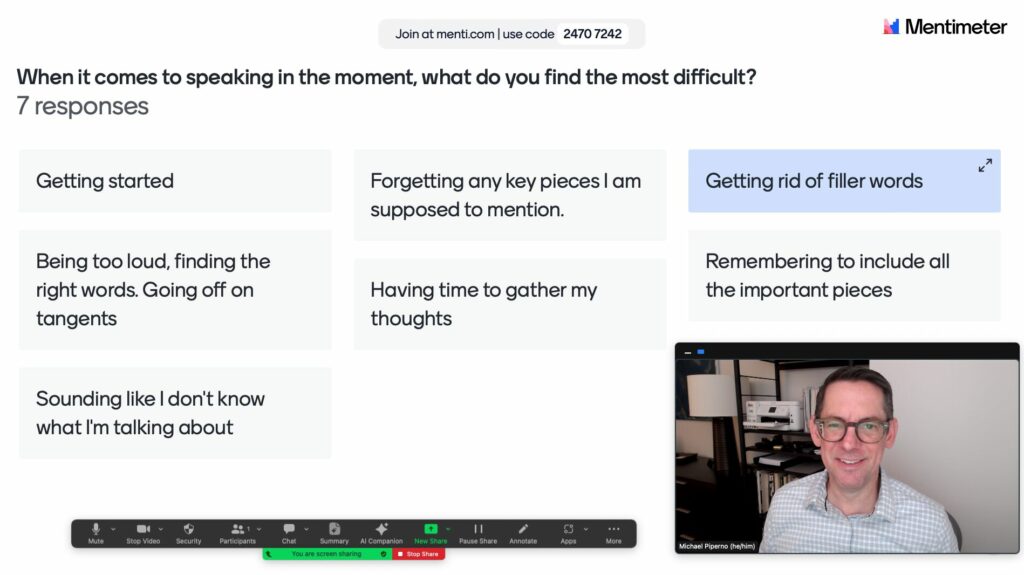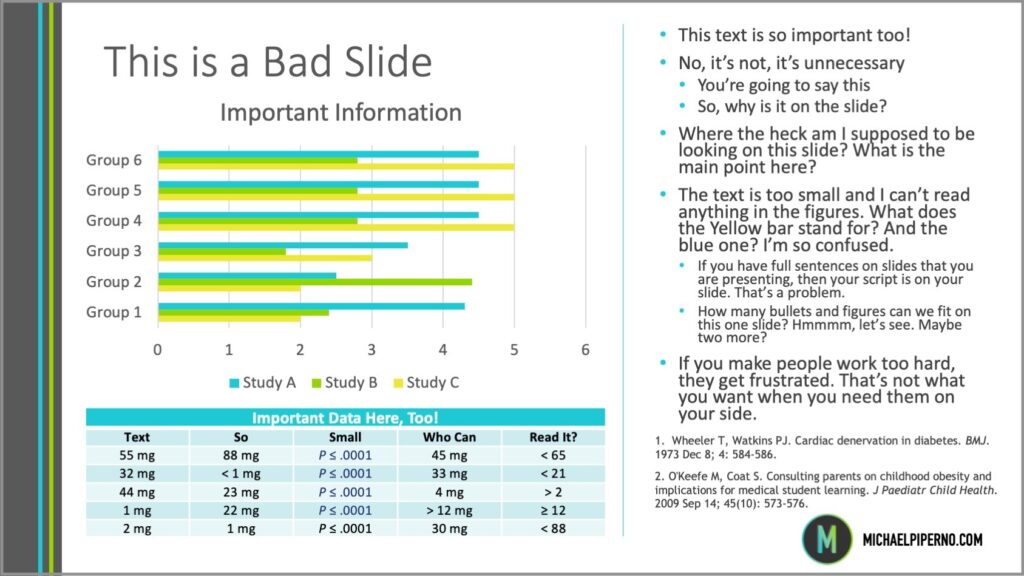The Data Doesn’t Speak for Itself
I coach a lot of life science and biotech clients who create scientific and technical presentations. From pitches to high stakes regulatory meetings, time and again speakers overload their presentations (slides and talking points) with data — with the expectation that the data will do the job that the speaker actually needs to do themselves…
…tell the story the audience needs to hear.
And do you know what? It’s not just the technical and scientific leaders we coach who do this. So, let’s take a moment to discuss how to transform your presentations from data dumps to captivating narratives.
Stop Bombarding Your Audience with Information
Here’s the challenge I often see in data-driven or scientific presentations: you present the data beautifully, but the story behind the data gets lost. You haven’t shown your audience the human impact, the problem you’re solving, or the exciting future your research, therapy, or solution promises.
So many numbers, charts, jargon — it’s enough to make anyone’s eyes glaze over. And don’t forget that your audience is seeing your presentation for the first time! You’ve likely lived with it for weeks, months, if not years. How do you help them absorb it? Remember it?
You have a secret weapon waiting to be used: storytelling.
Stories are Key To Unlocking Audience Engagement and Understanding
We humans are wired for narratives. Stories tap into our emotions, make complex ideas relatable, and leave a lasting impression.
So, how do we weave a compelling story into your data-driven presentation? Here are a few tips:
- Identify the Core Message: Before diving into data sets and charts, distill the essence of your presentation into a clear, concise message. What story do you want your audience to walk away with? Define this narrative core, and let it guide your entire presentation.
- Know Your Audience: Understanding your audience is fundamental to effective storytelling. Tailor your narrative to resonate with their interests, concerns, and level of expertise. Whether presenting to investors, researchers, or the wider public, adapt your story to connect specifically with them.
- Create a Narrative Arc: Just like any compelling story, your presentation should follow a logical and engaging structure. Introduce the characters (the researchers, the subjects, or the molecules), build tension with the challenges faced, and culminate in a resolution—the impact of your research or the promise of a brighter future.
- Visualize Your Data: Support your narrative with visuals that enhance rather than overwhelm. Use graphs, charts, and images strategically to emphasize key points in your story. Remember, visuals should complement your narrative, not serve as a substitute for it.
The Story is the Glue
Remember, your data is the evidence, but your story is the emotional glue that binds it all together. By weaving a narrative into your presentation, you’ll not only inform your audience, you’ll move them and inspire them. Craft your story with care, and watch as your audience transforms from spectators to active participants in your journey.
The Data Doesn’t Speak for Itself Read More »






